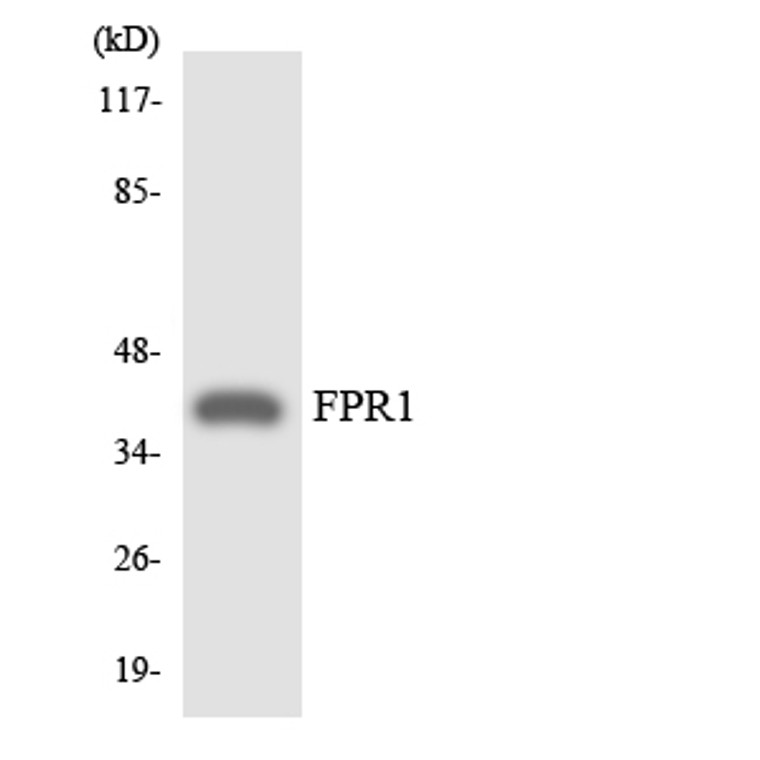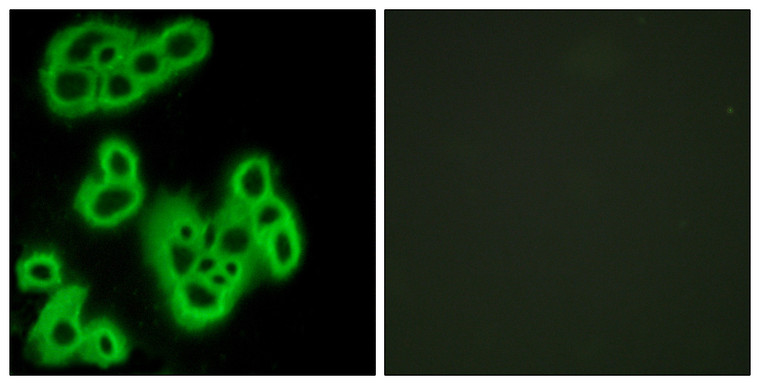| Host: |
Rabbit |
| Applications: |
WB/IHC/IF/ELISA |
| Reactivity: |
Human/Rat/Mouse |
| Note: |
STRICTLY FOR FURTHER SCIENTIFIC RESEARCH USE ONLY (RUO). MUST NOT TO BE USED IN DIAGNOSTIC OR THERAPEUTIC APPLICATIONS. |
| Short Description: |
Rabbit polyclonal antibody anti-fMet-Leu-Phe receptor (155-204 aa) is suitable for use in Western Blot, Immunohistochemistry, Immunofluorescence and ELISA research applications. |
| Clonality: |
Polyclonal |
| Conjugation: |
Unconjugated |
| Isotype: |
IgG |
| Formulation: |
Liquid in PBS containing 50% Glycerol, 0.5% BSA and 0.02% Sodium Azide. |
| Purification: |
The antibody was affinity-purified from rabbit antiserum by affinity-chromatography using epitope-specific immunogen. |
| Concentration: |
1 mg/mL |
| Dilution Range: |
WB 1:500-1:2000IHC 1:100-1:300IF 1:200-1:1000ELISA 1:5000 |
| Storage Instruction: |
Store at-20°C for up to 1 year from the date of receipt, and avoid repeat freeze-thaw cycles. |
| Gene Symbol: |
FPR1 |
| Gene ID: |
2357 |
| Uniprot ID: |
FPR1_HUMAN |
| Immunogen Region: |
155-204 aa |
| Specificity: |
FPR1 Polyclonal Antibody detects endogenous levels of FPR1 protein. |
| Immunogen: |
The antiserum was produced against synthesized peptide derived from the human FPR1 at the amino acid range 155-204 |
| Post Translational Modifications | Phosphorylated.which is necessary for desensitization. |
| Function | High affinity receptor for N-formyl-methionyl peptides (fMLP), which are powerful neutrophil chemotactic factors. Binding of fMLP to the receptor stimulates intracellular calcium mobilization and superoxide anion release. This response is mediated via a G-protein that activates a phosphatidylinositol-calcium second messenger system. Receptor for TAFA4, mediates its effects on chemoattracting macrophages, promoting phagocytosis and increasing ROS release. Receptor for cathepsin CTSG, leading to increased phagocyte chemotaxis. |
| Protein Name | Fmet-Leu-Phe ReceptorFmlp ReceptorN-Formyl Peptide ReceptorFprN-Formylpeptide Chemoattractant Receptor |
| Database Links | Reactome: R-HSA-418594Reactome: R-HSA-444473Reactome: R-HSA-6783783Reactome: R-HSA-6798695 |
| Cellular Localisation | Cell MembraneMulti-Pass Membrane ProteinInternalizes In Presence Of Its LigandsFmlpTafa4 And Ctsg |
| Alternative Antibody Names | Anti-Fmet-Leu-Phe Receptor antibodyAnti-Fmlp Receptor antibodyAnti-N-Formyl Peptide Receptor antibodyAnti-Fpr antibodyAnti-N-Formylpeptide Chemoattractant Receptor antibodyAnti-FPR1 antibody |
Information sourced from Uniprot.org
12 months for antibodies. 6 months for ELISA Kits. Please see website T&Cs for further guidance









